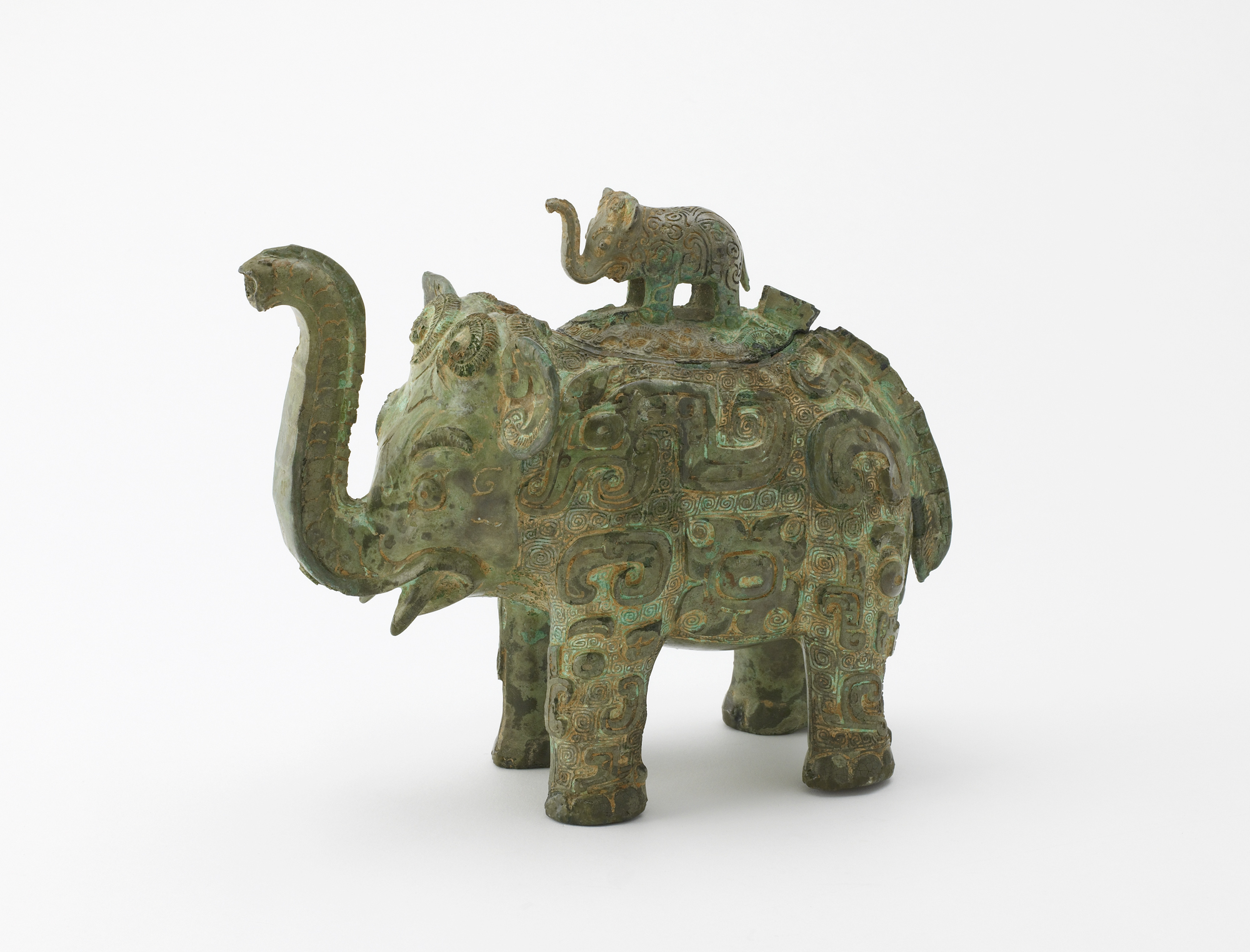ancestorsomeone from whom you are descended. In Western thought, it is usually more distant than a grandparent; however, in Chinese culture, deceased parents and grandparents are considered ancestors.: someone from whom you are descended. In Western thought, it is usually more distant than a grandparent; however, in Chinese culture, deceased parents and grandparents are considered ancestors.
bronzea mixture of copper, tin, and often lead that produces a strong metal.: a mixture of coppera soft malleable metal of a pinkish-orange color with high thermal and electrical conductivity., tina silvery-white metal, the chemical element of atomic number 50., and often lead that produces a strong metal.
Bronze Agea period of human culture characterized by the initial use of weapons, tools, and other objects made of bronze.: a period of human culture characterized by the initial use of weapons, tools, and other objects made of bronze. Changes in material culture engendered profound alterations in social, political, and economic systems. The Chinese Bronze Age is dated between about 1800 and about 300 BCE.
castingan object made by pouring molten metal or other material into a mold.: an object made by pouring molten metal or other material into a moldan outer housing used to shape an object..
coiling methodone of the oldest techniques for making pottery. Coils of clay are layered on top of each other and then pressed together.: one of the oldest techniques for making pottery vessels. Coils of clay are layered on top of each other and then pressed together.
ewera jug or pitcher to hold water or wine.: a pouring vessela container such as a cup, bowl, pot, or dish. like a jug or pitcher used to hold water or wine.
mold: an outer housing used to shape an object.
motifa repeating design, pattern, or image.: a repeating design, pattern, or image.
ornamentan object or motif used for decorative purposes.: an object or motif used for decorative purposes.
piece-mold castinga technique used for casting bronzes. After a desired vessel was fashioned from clay, it was covered with an additional layer of clay that, when dried, was carefully cut away in matching vertical sections (usually three or four) to create the casting molds. The original clay model was then shaved down for the interior core, and the mold sections were reassembled around it to make the outer walls. The space between the core and outer molds was then filled with molten bronze. In many cases, the joins between mold sections appear as raised ribs on the exterior of finished bronzes. After the bronze cooled, the clay molds were broken and removed, and the vessel was polished to take away flaws and any metal that had seeped into gaps between the mold sections.: a technique used for casting bronzes. After a desired vessel was fashioned from clay, it was covered with an additional layer of clay that, when dried, was carefully cut away in matching vertical sections (usually three or four) to create the casting molds. The original clay model was then shaved down for the interior core, and the mold sections were reassembled around it to make the outer walls. The space between the core and outer molds was then filled with molten bronze. In many cases, the joins between mold sections appear as raised ribs on the exterior of finished bronzes. After the bronze cooled, the clay molds were broken and removed, and the vessel was polished to take away flaws and any metal that had seeped into gaps between the mold sections.
pinch-pot methodone of the oldest techniques for making pottery. The shape of a vessel is created by pinching the walls with one’s fingers.: one of the oldest techniques for making pottery. The shape of a vessel is created by pinching the walls with one’s fingers.
reliefthree-dimensional forms that protrude from a flat surface.: three-dimensional forms that protrude from a flat surface.
rituala set pattern of behavior for a religious or other kind of ceremony.: a set pattern of behavior for a religious or other kind of ceremony.
symbola shape or design that is recognizable and has a meaning associated with it.: a sign, drawing, word, or design that represents an idea or an act.
symmetricala mirror image in which objects on one side of an imaginary line are exactly like objects on the other side.: a mirror image in which objects on one side of an imaginary middle line are exactly like objects on the other side.
taotie(t-ow-tee-eh) a stylized monster face-mask design pattern commonly found on ancient Chinese bronzes with symmetrically arranged eyes, ears, horns, snout, and jaw.: a stylized animal face-mask pattern commonly found on ancient Chinese bronzes with symmetrically arranged eyes, ears, horns, snout, and jaw.
vessel: a container such as a cup, bowl, pot, or dish.
zoomorphicshaped like an animal.: shaped like an animal.






